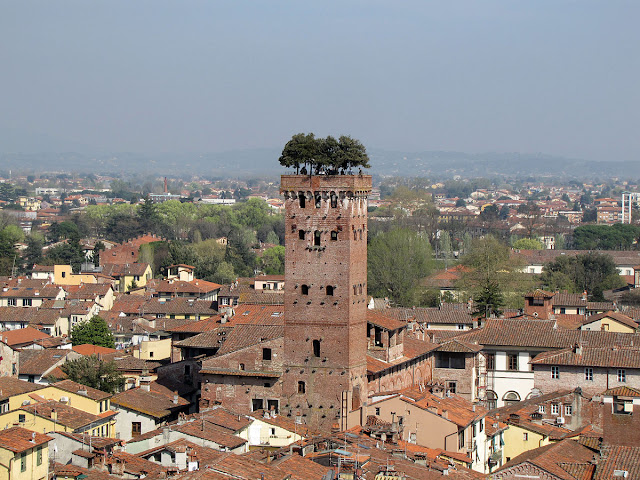5 Best Places to Visit in Tuscany Italy
Lucca is one of Italy's most loved cities. The city can be visited in a day, unless you want to enjoy a few days of the best of art, or choose it as a base from which to explore central or northern Tuscany. (discovertuscany.com)
Italy's Lucca Tuscany has a history of domination by a long list of invaders and rulers: Romans, Lombards, Ostrogoths, Franks, Florence, Scaligeri Verona, Napoleon (who passed it on to his sister Elisa Baciocchi), and the House of Bourbon. Through it all, Lucca managed to build a beautiful city, which played a significant role in architectural history from the Lombard period onwards.
Although the early Medieval churches, some built with ancient materials, later converted and restored in the 12th century, the churches you see today are some of the most beautiful in Tuscany. Walk over to the surrounding walls for an overview, then try to enjoy one of Italy's most charming small towns.
Cathedral
The magnificent Romanesque facade with beautiful arches and carvings is a clue to the treasures inside Lucca cathedral, which was rebuilt in the 13th century from the previous church. In the middle of the 13th century, the portico was decorated with beautiful statues by Lombard craftsmen.
At the main door are four beautifully carved 13th century scenes from the life of St. Martin, by Nicola Pisano. Attached to the right is a large campanile, 69 meters high, of light colored travertine and brick. Carved to the right of the portico pier is a maze, this is interesting because it may predate the famous Chartres maze of the same pattern.
The greatest treasure of the cathedral is Volto Santo. This is the image of Christ on the Cross. Carved by Nicodemus out of cedar wood. The venerated statue is carried through the streets in a solemn procession every 13 September. The cathedral museum has other treasures, such as medieval hymns and elaborate gold work, including a cross by Pisani.
San Michele at Foro
With its stunning faade, which rises like a decorated wedding cake, and its placement on a sprawling piazza in the historic city center, it's no wonder that San Michele di Foro is often mistaken for Lucca's cathedral.
Standing on the site of the Roman forum, the church of San Michele was built from the 12th to the 14th centuries, and the faade of ornate marble is stunningly beautiful.
Towering above them was the even larger than life-size Archangel Michael. The romantic character of the interior has been preserved and highlighted by the terracotta Madonna and Child by Andrea della Robbia, and in the left transept, a 15th century panel painting of saints Roch, Sebastian, Jerome, and Helen, one of Filippo Lippi's finest works.
Guinigi Tower
In the middle of the old walled city, you're sure to notice a giant tower with oak trees growing on top of it. It belongs to Case dei Guinigi, a complex of two mansions belonging to an aristocratic family that brought about a period of peace and prosperity in the early 15th century. The two palaces stand opposite each other, built in the 14th-15th centuries, and later modified; one now as the National Museum. You can climb the tower and see the city and trees at 44.25 meters high.
Anfiteatro Romano (Roman Amphitheater)
Strolling through the historic center of Lucca, you'll notice the odd twists in some of the streets. If you look closely, you'll see some unusual filled arches in the stone of the building, and will eventually come down to a passage that leads to Piazza del Mercato.
This odd oval space is surrounded by multi-storey buildings that were once part of Lucca's Roman arena, and the buildings follow in the footsteps of the enormous stone walls, which have been built into its remains. The Roman amphitheater was built in the second century BC and was mostly destroyed during the barbarian invasion. During the Middle Ages, the house was built into the walls of the superstructure, preserving the oval outline of the arena.
Piazza Napoleone
Lucca Square is bounded on the west side by the picturesque facade of the Palazzo della Provincia, built from 1578. To the southwest of the Palazzo della Provincia is the San Romano Church. This church was built by the Dominicans in the year 1280. This church contains the Tomb of Saint Romanus (1490). Near the northeast corner of Piazza Napoleone is the 12th-century church of San Giusto, with a sandstone facade and strong marble band and a lavishly decorated main door. The interior was renovated in the Baroque style in the mid-17th century.





No comments:
Post a Comment